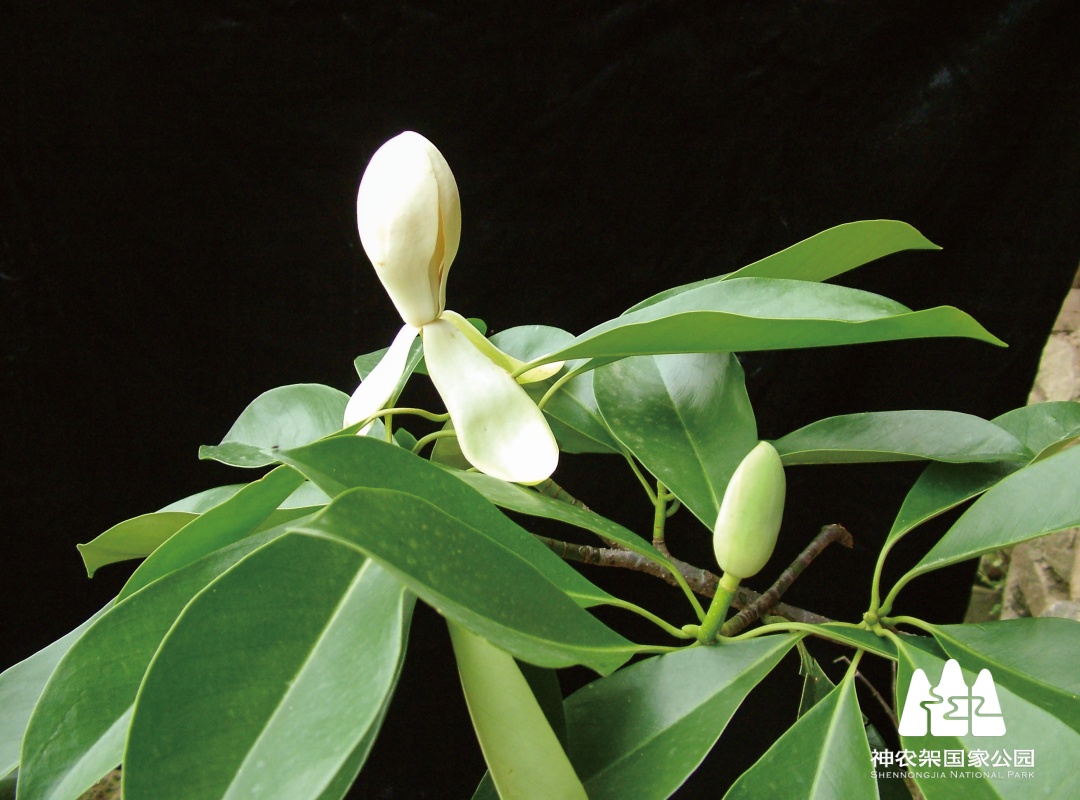Manglietia patungensis: Lotus-like Flowers; Relatively Primitive Taxon
Updated:2025-11-13 Source:Shennongjia National Park
Wandering beneath the forest canopy in May, you might be fortunate enough to a catch a sweet fragrance permeating the moist air. You look around for the source of this delicate, refreshing scent but find nothing, and frustration as well as disappointment begins to creep in. Don’t worry—if you simply follow the fragrance and lift your gaze, you will find that high upon the towering trees, lotus-like flowers are hidden among the green leaves. The trees stand so tall that the snowy blooms are hard to spot, yet their alluring scent makes them impossible to miss. This beautiful and aromatic plant is the Manglietia patungensis.
The Manglietia patungensis is a tree of extraordinary beauty. Outside the flowering season, it stands tall and upright, its straight trunk pierces the clouds, while its glossy evergreen leaves form dense shade. In bloom, the Manglietia patungensis is transformed. Among the dark green foliage, white flowers as large as lotuses unfold. Each flower bears six thick, snow-white petals enclosing a center shaped like a lotus throne. Buds yet to open gleam like mutton fat chalcedony; when fully in bloom, the petals frame vivid red stamens and tender green pistils, as dazzling as jewels upon an altar. These luminous flowers also release an exquisite fragrance that lingers in the air around the tree. This layered, soft yet elegant scent is simply unforgettable.


The Manglietia patungensis belongs to the genus Manglietia of the family Magnoliaceae. This genus is a relatively primitive taxon within Magnoliaceae and is endemic to southeastern Asia. Most Manglietia plants are concentrated in tropical and warm subtropical regions. China has the greatest distribution of Manglietia species, with the country’s southwestern region being the center of the genus’ origins of diversification. Among the numerous plants belonging to the Maglietia genus, the Manglietia patungensis has the northernmost distribution. It is a dominant tree in the native evergreen broad-leaved forests of eastern Sichuan, Hubei, and Hunan. As such, this beautiful tree species provides important material for studying the community structure of local primary forests.
However, the beauty of the species appears unappreciated. Its broad, long, oblong leaves resemble those of the loquat, leading locals to name it “loquat nanmu”. Because the tree is tall and upright, with fine, dense, and durable wood, it has long been prized as an excellent timbre for furniture making. Its comparatively high economic value led to overharvesting, reducing the tree that had once been widespread across the Yangtze River basin to a vulnerable species. Today, in the primeval forests of Shennongjia, the remaining Manglietia patungensis trees persist as a dominant species, forming the most magnificent evergreen broad-leaved forests together with Phoebe hui, Machilus nanmu and other evergreen trees.
Although the Manglietia patungensis remains relatively common in primary evergreen broad-leaved forests, human disturbance has led to the spread of fast-growing deciduous secondary trees in degraded evergreen forests, which has a negative consequence for young Manglietia patungensis trees. Although the species grows quickly, the deciduous trees that grow faster will occupy the biological niches which previously belonged to Manglietia patungensis seedlings. The understory humidity and light intensity of evergreen broad-leaved forests differ markedly from those of mixed evergreen and deciduous forests. Because of the lower humidity and greater illuminance, the forest’s environment changes, and the understory plant communities that once coexisted with Manglietia patungensis change as well. Protecting the primeval ecological environment sustained by this species is to protect the many wild plants that coexist with it. Therefore, by protecting the Manglietia patungensis as an umbrella species for the forest, by maintaining the primeval environment it creates, we will allow future generations to continue to benefit from the economic value of Manglietia patungensis as well as the increasingly rare and precious sight of primeval beauty.(Written by Fang Jie Reviewed by Jiang Mingxi Photo by Liu Ang)
Species File:
Manglietia patungensis
Order: Magnoliales
Family: Magnoliaceae
Genus: Manglietia
Identification Features:
A tree with pale gray-brown bark tinged with red. Leaves are thinly leathery and obovate-elliptic. Flowers are white, fragrant and narrowly oblong with rounded tips. Anthers are purple-red. Aggregate fruit is cylindric-elliptic and pale purple-red, with follicles bearing dotted protrusions. Flowering period: May–June; fruiting period: July–October.
Distribution in China: Western Hubei (Badong; Lichuan) and southeastern Sichuan (Hejiang; Nanchuan).
Address:36 Chulin Road, Muyu Town, Shennongjia Forestry District, Hubei Province 鄂ICP备18005077号-3
Phone:0719-3453368



